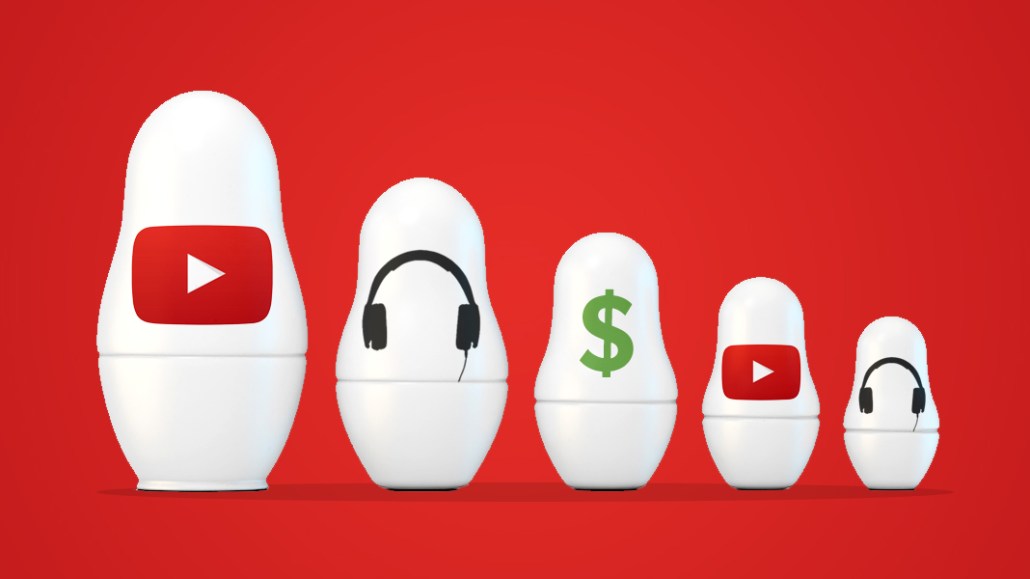‘Mini gold rush’: How ad buyers are handling video podcast inventory

As publishers’ podcast executives ramp up their experimentation with accompanying video, podcast ad buyers are starting to have more conversations about what opportunities this format can provide to brands — and which investment teams handle the buys, according to four agency executives who spoke with Digiday.
“I think that you’re seeing a little mini gold rush here that people are responding to. Word got out that people actually like consuming podcasts… on YouTube and now the marketplace is reorganizing around that,” said Dan Granger, CEO of audio ad agency Oxford Road.
Molly Schultz, svp of integrated investment at UM, said she’s recently had more discussions with publishers about video podcast opportunities. These types of conversations started picking up in the fourth quarter of last year, according to Adam Arnegger, managing partner and executive investment director at Wavemaker US.
With the recent fervor around video podcasts, ad buyers discussed the advertising opportunities for brands in video podcasts and how they are organizing their investment teams to manage the crossover from audio to video.
Audio teams handling video ads
Despite the fact that technically ads in video podcasts are in digital video, audio investment teams at ad agencies are continuing to handle the media plans. That’s because video podcast ads are typically tied to audio podcast ad deals, agency execs said.
“If you have a show that has 100,000 impressions and 50,000 are on YouTube and 50,000 are audio, we’ll take the 100,000 impressions that include that video because we’re going to see that [see and say] effect have a larger impact on ad response. So the units are valuable and we don’t need to artificially limit ourselves on the definition of a podcast,” Granger said. “It probably should be a both-and model.”
At Wavemaker, pitches are going to the audio investment team and then brought over to the video team.
“We’re still in the process of figuring out where this lives,” Arnegger said. “We’re handling it from the core, which is audio and then we’ll start to evolve that as … part of our video buying consumption.”
However, this won’t happen until video podcasts become “more mainstream” and more of their podcast partners start to produce them, he said. “It is something that we are looking at and considering for each and every one of our clients now,” Arnegger said.
UM has integrated investment teams that oversee all channels, so there’s no delineation there, Schultz said.
Video podcasts can also help advertisers that are “still hesitant when it comes to believing audio can be enough on its own” to “feel more comfortable that they’re able to get the full sight, sound and motion,” she said.
However, cross-device attribution is not possible through a platform like YouTube, Maria Tullin, vp and managing director of advanced and digital audio at Horizon Media, noted in an email — meaning it’s difficult to track a podcast listener on a mobile device to a desktop viewer on the platform.
“For clients that are measuring success across upper funnel KPIs, I think it’s a great opportunity to come up with creative ideas, brand integrations and larger sponsorship opportunities,” Tullin said. But for lower funnel clients focused on cost per action, customer acquisition cost or return on advertising spend, “it can be a harder sell,” she said.
A Twitch model?
The typical video podcast ad format is similar to the backbone of podcast audio advertising: personal endorsements, agency execs said.
Video “opens up a lot of branding opportunities” like unboxings, product placement and brand logos, Tullin said. It can also be as simple as having a Coke can on the table near a podcast host during a recording of an interview show, Granger said.
Schultz likened it to the way advertisers sponsor content on the livestream platform Twitch. “It’s a different format and content, but sort of similar in the fact that there is a personality who’s hosting the content, which gives you more opportunity to weave the brand in,” she said.
Pre-roll and mid-roll ads on a video platform like YouTube are “table stakes” and add further “frequency” for the more integrated advertising opportunities in video podcasts, she added. “Because there is a host and because it has roots in podcasts, we would be interested in how we can… work ourselves into the content itself,” Schultz said.
Bleacher Report sells sponsorships for its live-streamed podcast recordings of shows like “The Voncast” and “Taylor X” aired on its B/R app, said Tyler Price, vp of content development and production at Bleacher Report. The resulting video assets are then distributed on social media and YouTube, where — depending on the commitment level of the advertiser — they can monetize the video with standard ads. State Farm and Chase have sponsored B/R’s podcast livestreams, Price said.
“If you don’t have a video asset attached to your audio format now, you’re leaving audience on the table and you’re leaving money on the table,” Price said.
More in Media

Digiday+ Research: Publishers’ growing focus on video doesn’t translate to social platforms
Major publishers have made recent investments in vertical video, but that shift is not carrying over to social media platforms.

Technology x humanity: A conversation with Dayforce’s Amy Capellanti-Wolf
Capellanti-Wolf shared insight on everything from navigating AI adoption and combating burnout to rethinking talent strategies.

How The Arena Group is rewriting its commercial playbook for the zero-click era
The company is testing AI-powered content recommendation models to keep readers moving through its network of sites and, in doing so, bump up revenue per session – its core performance metric.







